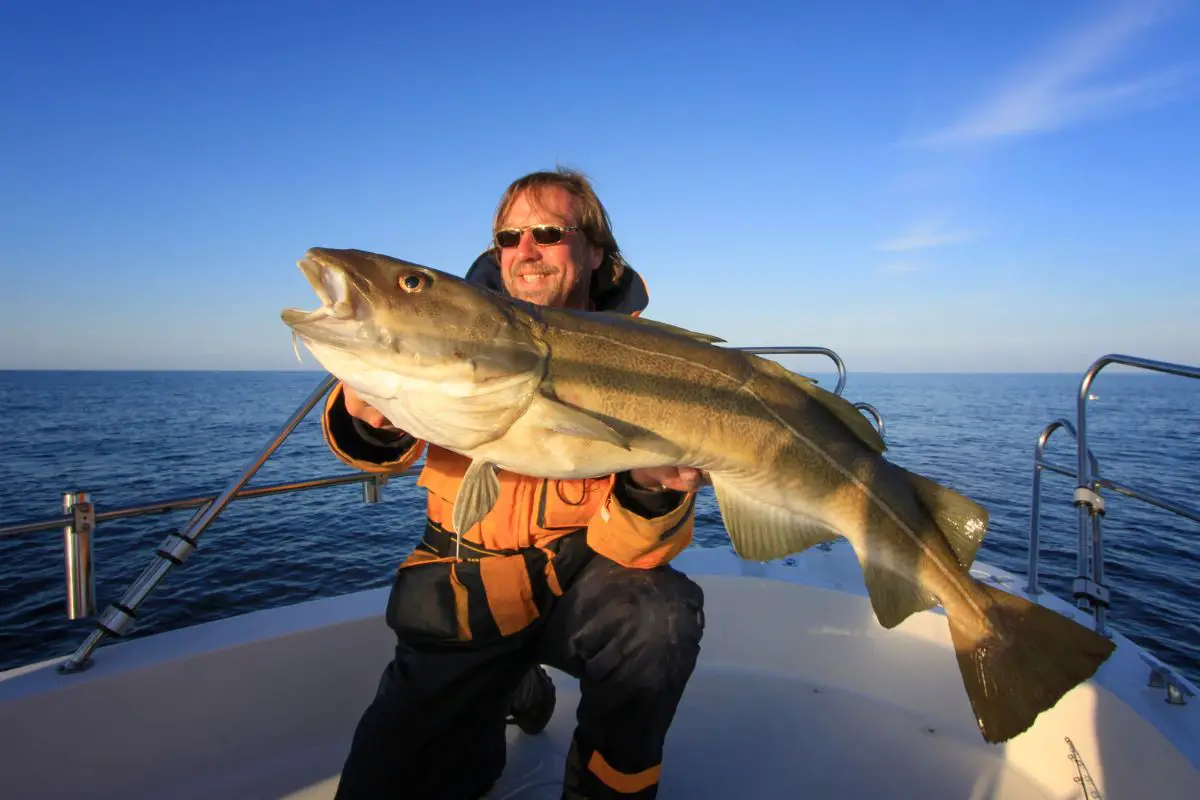
Cod is one of the most famous whitefish in history, and a fish that is used in many different dishes. In this article, we’ll look at some other fish that are like cod, and how you can tell the difference.
1. Haddock is the most common replacement for cod.
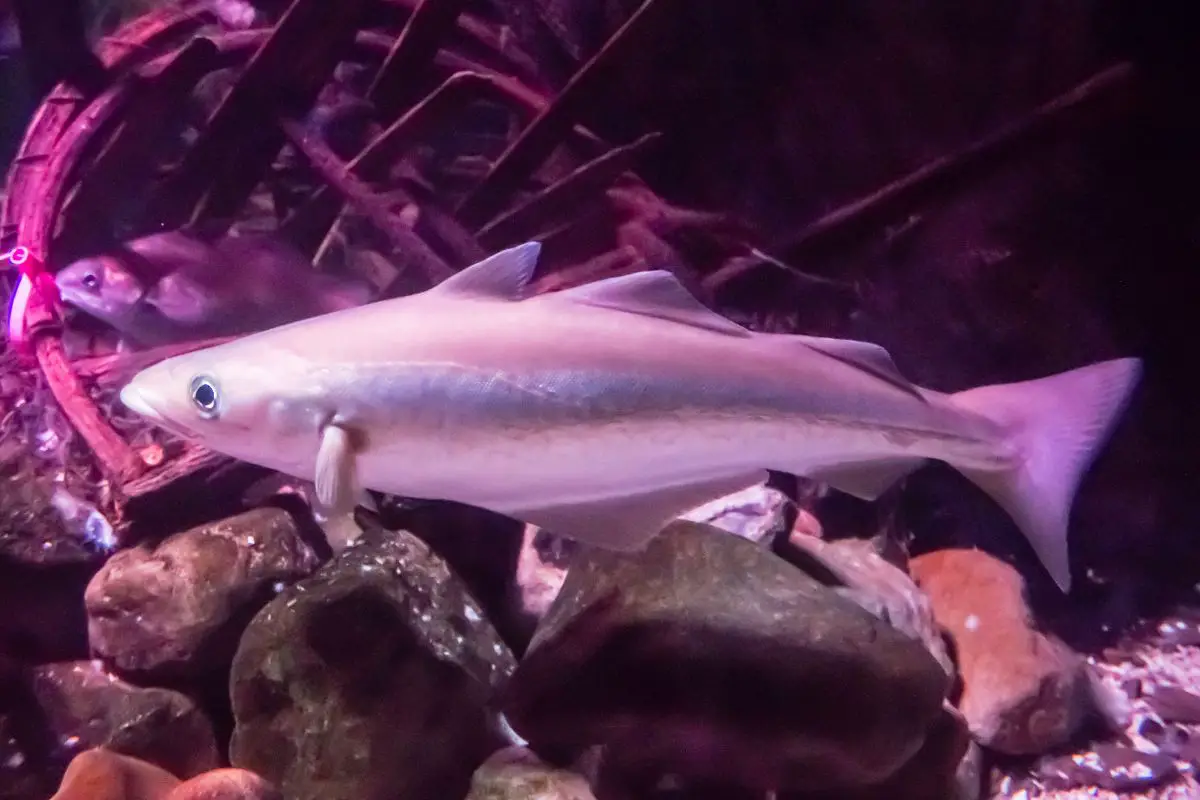
Cod is often replaced with haddock in culinary dishes, and both are members of the family gadidae. Haddock are benthic feeders. They eat bottom-dwelling fish, crabs, and crustaceans on the sea floor.
They can grow from 1-3 feet in length, and 2-7 lbs. They live in the North Atlantic ocean. There is more haddock on the eastern side of the Atlantic ocean than on the west.
Haddock are dark brown or black on their dorsal side and white on the underside. They have dark lateral lines, and a dark splotch called the “devil’s thumbprint” above the pectoral fin. Haddock are related to cod and swim in the same waters.
They have 3 dorsal fins and 2 anal fins. Their meat tastes similar enough that haddock is a replacement for cod in many recipes. Cod are much larger than haddock.
They regularly exceed 3 feet in length, and average 11-26 lbs. Haddock have dark lateral lines. Cod have light or white lateral lines.
Haddock are silvery white on their anterior side. Cod are speckled green or brown.
2. Cusk are rare to find, so ask your local fisherman.
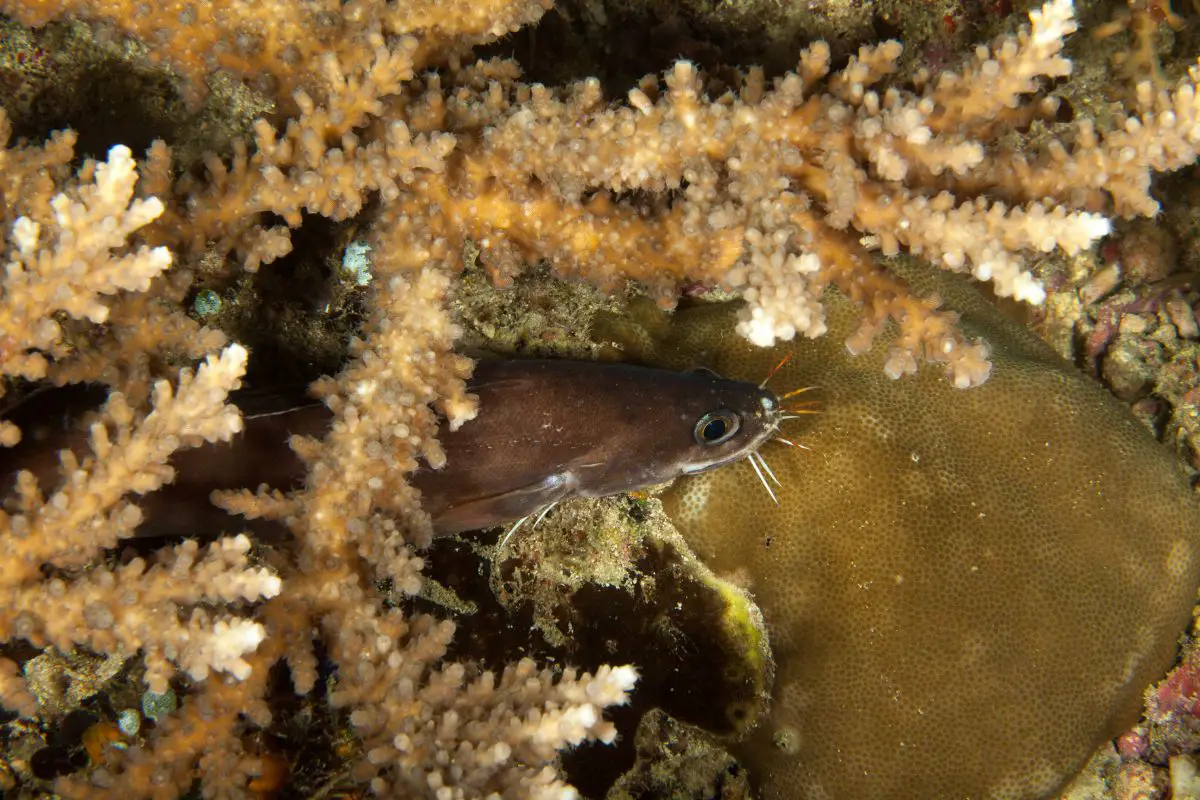
This species of North Atlantic whitefish looks like the head of cod was put on the body of an eel. Also known as tusk, torsk, and brosme, these fish are most at home in moderately deep water, below 600 ft. Cusk have only one dorsal fin.
They are gray or white to reddish brown. Cusk is a whitefish that can replace cod in recipes, and cusk have a typical cod-style head. They are caught in many of the same regions of the North Atlantic.
Cusk are plentiful in New England and Eastern Canada, as well as in the Baltic Sea and in the waters around Iceland. Cusk can grow to a length of about 4 ft and weigh up to 45 pounds. Unlike cod, cusk do not school and are never caught in large numbers.
Cod are some of the most reproductive fish in the ocean, with females laying up to 500 million eggs. Cusk are much less prolific, and can’t be caught en masse as easily, which makes their market value negligent. However, they are regularly caught by fishermen in the North Atlantic, and can be used to replace cod in recipes.
3. Tilapia makes a great replacement for cod in recipes, but is a very different fish.
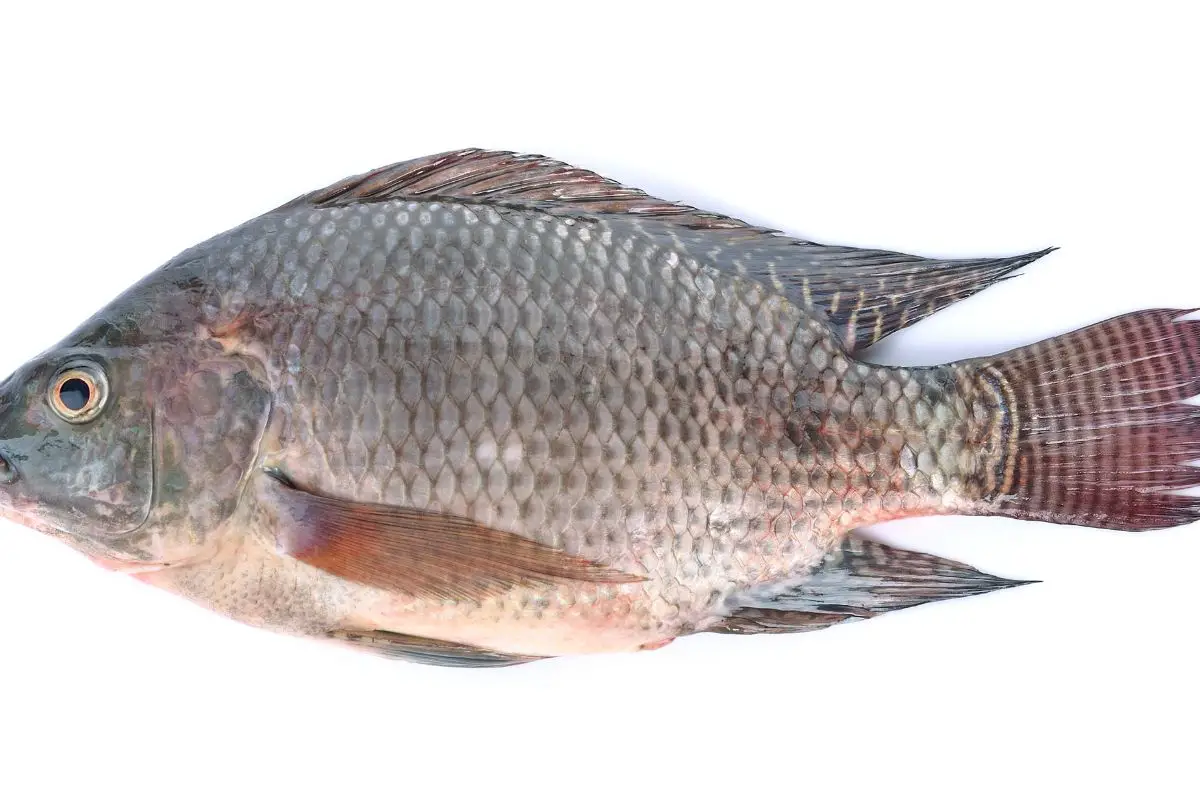
Tilapia is one of the most farmed fish in the world (2nd, after carp). It has a neutral white fish flavor that makes it a great substitute for cod in recipes. A genetically improved strain of Tilapia grows 100% faster than the initial strain, and farmed Tilapia has a lower carbon footprint than chicken or beef.
Most species of Tilapia live in freshwater, like rivers and lakes, rather than saltwater oceans. They grow up to 2 feet in length, but most are smaller than that. They have lateral, compressed bodies and long dorsal fins.
Their teeth are conical, but they mostly eat algae and vegetation that other fish ignore. Tilapia are most like cod after they have been fished, filleted, and cooked. They are similar on your plate, but very different in the water.
Cod are North Atlantic apex predators that feed on other fish and grow to massive sizes. Tilapia are relatively small freshwater fish that eat vegetation and algae.
4. Atlantic pollock are perfect for fish and chips.
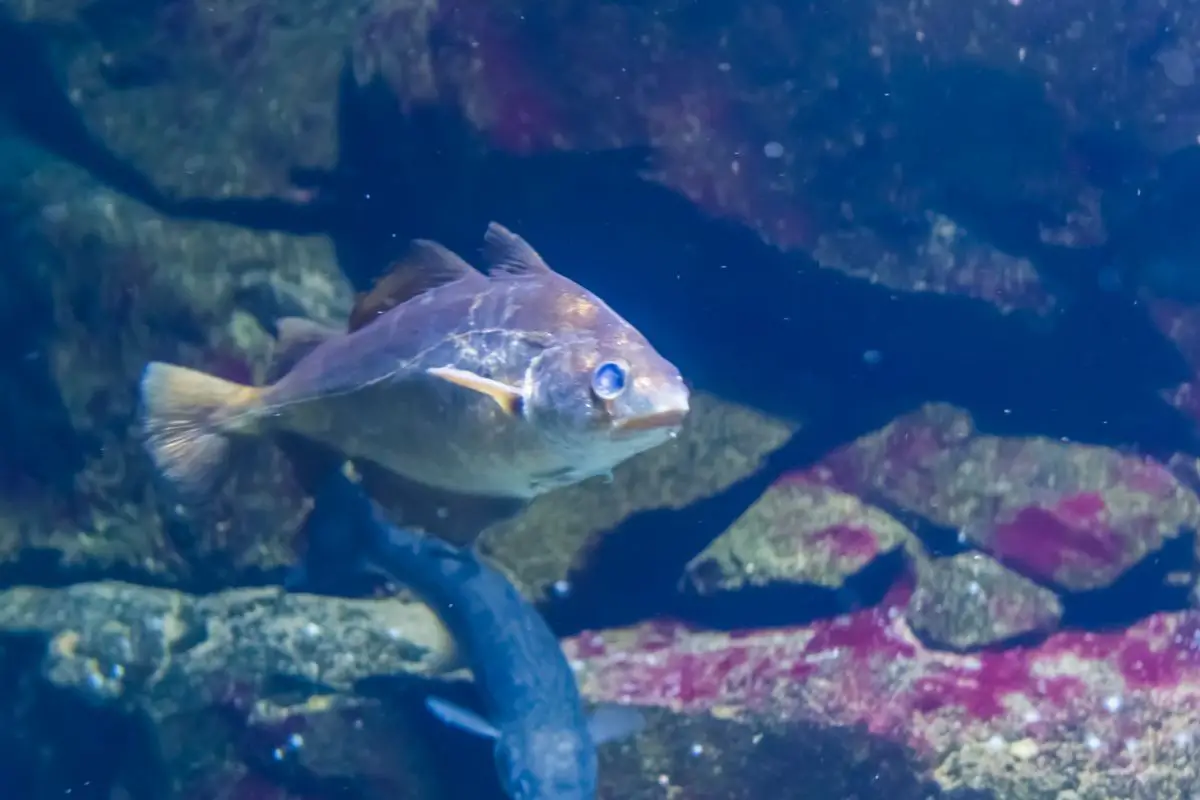
Pollack in North America, or Coley in English and Ireland, refers to 2 different species of North Atlantic whitefish that are commonly used as low-cost alternatives to cod for fish and chips, or minced fish fingers.
Both species of Atlantic Pollock grow up to 3 and a half feet long, and can weigh up to 45 lbs. They are found up to 600 feet deep, mainly in coastal areas over rocks and in the water column. They are fast growing and breed offshore. They live up to 15 years.
Atlantic pollock taste like cod, but they are smaller. The 2 species have slightly different coloration. You would not mistake either of these fish for a cod, which is much larger and speckled green or brown.
5. Alaska Pollock is one of the world’s biggest fisheries.
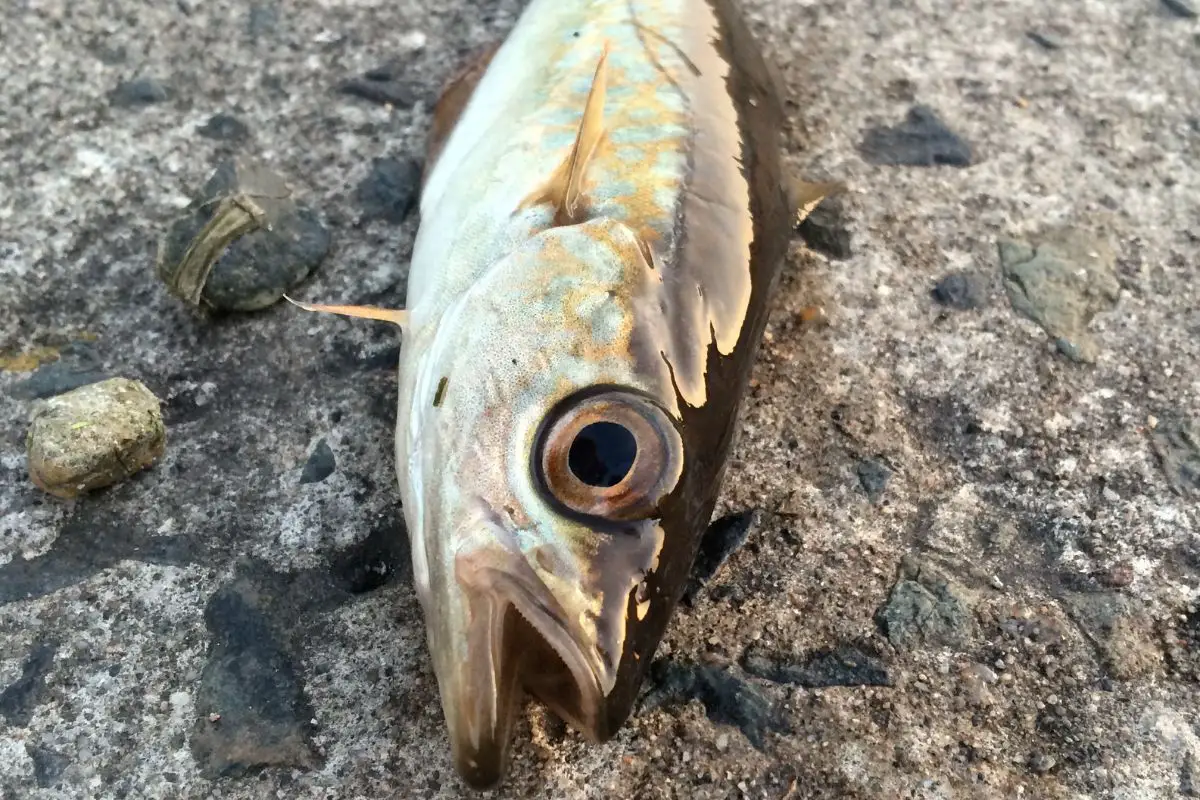
This fish, Gadus chalcogrammus, is also called Alaska Pollock, or Walleye Pollock. It is different from Atlantic Pollock. It is another whitefish that is used as a replacement for cod in recipes.
The population of Alaska Pollock live mostly in the arctic Bering Sea. Like cod, they reproduce quickly and are one of the most fished species in the world. More than 3 million metric tons of Alaska pollock are fished in the North Atlantic every year.
Alaska Pollock are speckled black and yellow with a silvery body. They grow up to 3 feet long and weight between 1 and 3 lbs. They live less than 12 years.
Alaska pollock is like cod in taste. They are also fished commercially, like cod once were. However, they are smaller than cod and occupy a different ecological niche.
Cod are apex predators who eat large fish and each other. Alaska Pollock feed mostly on small crustaceans on the ocean floor, and krill.
6. Striped bass are freshwater fish that taste great.
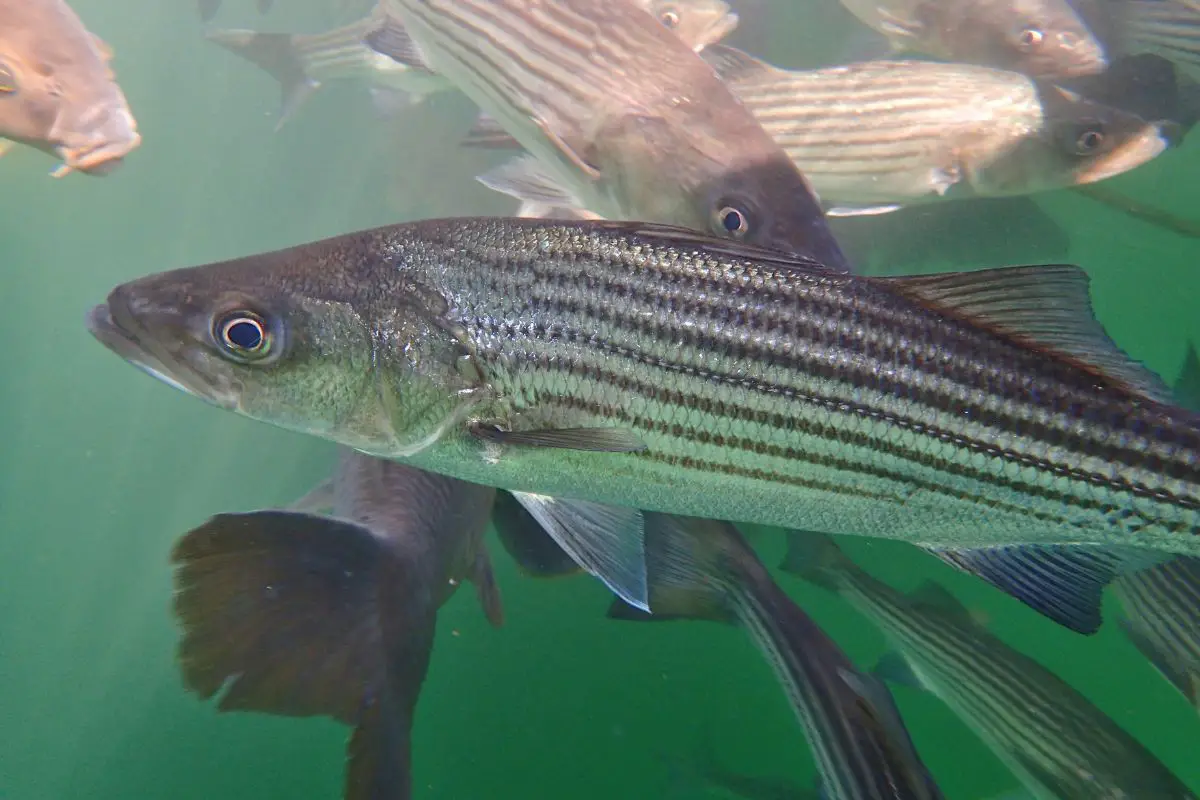
Striped bass are a species of bass that lives along the Atlantic coast of the US. They are fished recreationally,and compared to cod. Striped bass spawn in freshwater rivers and streams and then spend most of their adult lives in the ocean.
They have a smooth, white-gray scaly body and can live for up to 30 years. Striped bass is a replacement for cod in many recipes. Striped bass are also large oceanic fish that eat other fish.
Striped bass live further south and in warmer waters than cod. They are not as big, and they are not apex predators, but they are very delicious.
7. White sea bass look like the trout of the sea.
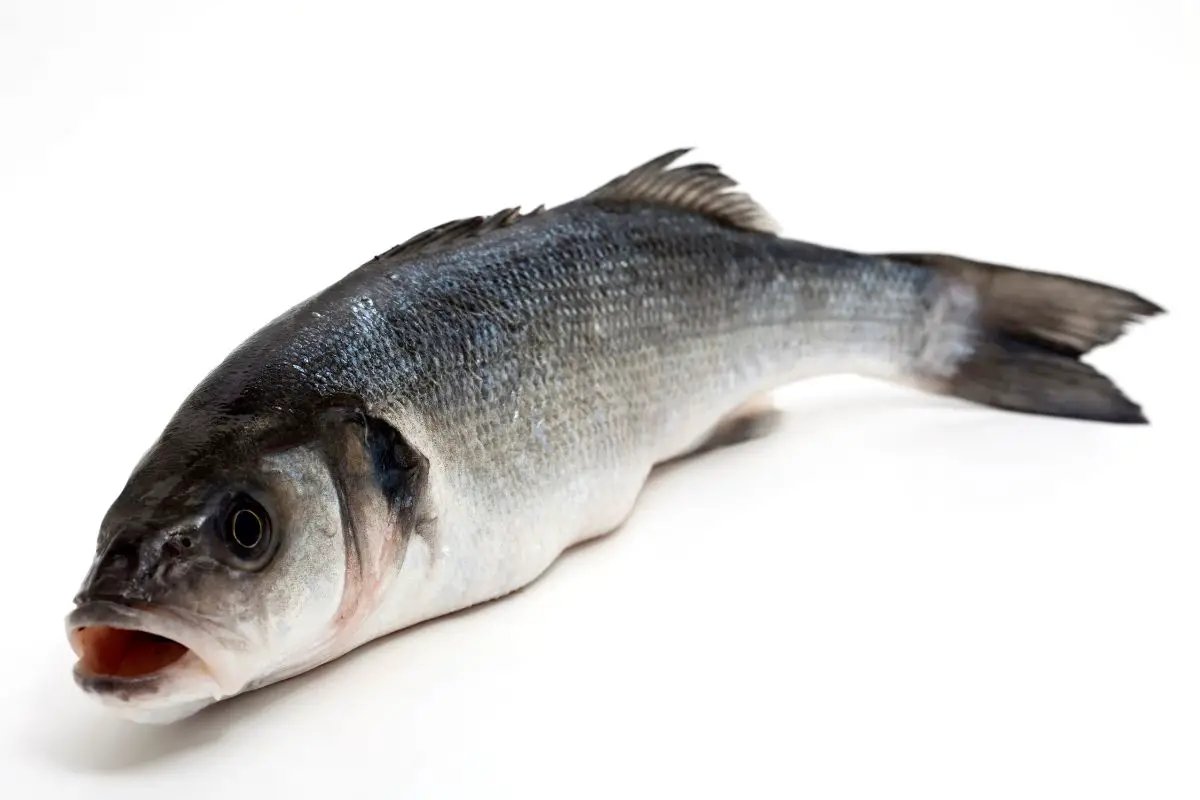
The white seabass, also called white weakfish, is a species of croaker that lives in the pacific ocean from Mexico to Alaska. They travel in schools and prefer deep water and the protection of kelp forests. White seabasses are elongated with a compressed head and a short dorsal fin.
Although they can grow to more than 20 lbs, the average white sea bass is much smaller at about 30 inches and 7.5 lbs. They are predators that eat small prey like anchovies and squid. They are not easily identified because they don’t have many distinctive markings, and they are sometimes confused as “sea trout.”
White seabasses are like cod in that they school together and like deep water, and they are tasty to eat. They are much smaller than cod and live in different areas, feeding on different prey. White sea bass also look very different, and more closely resemble trout than the large and heavy bodies of cod.
8. Lingcod are neither ling, nor cod.
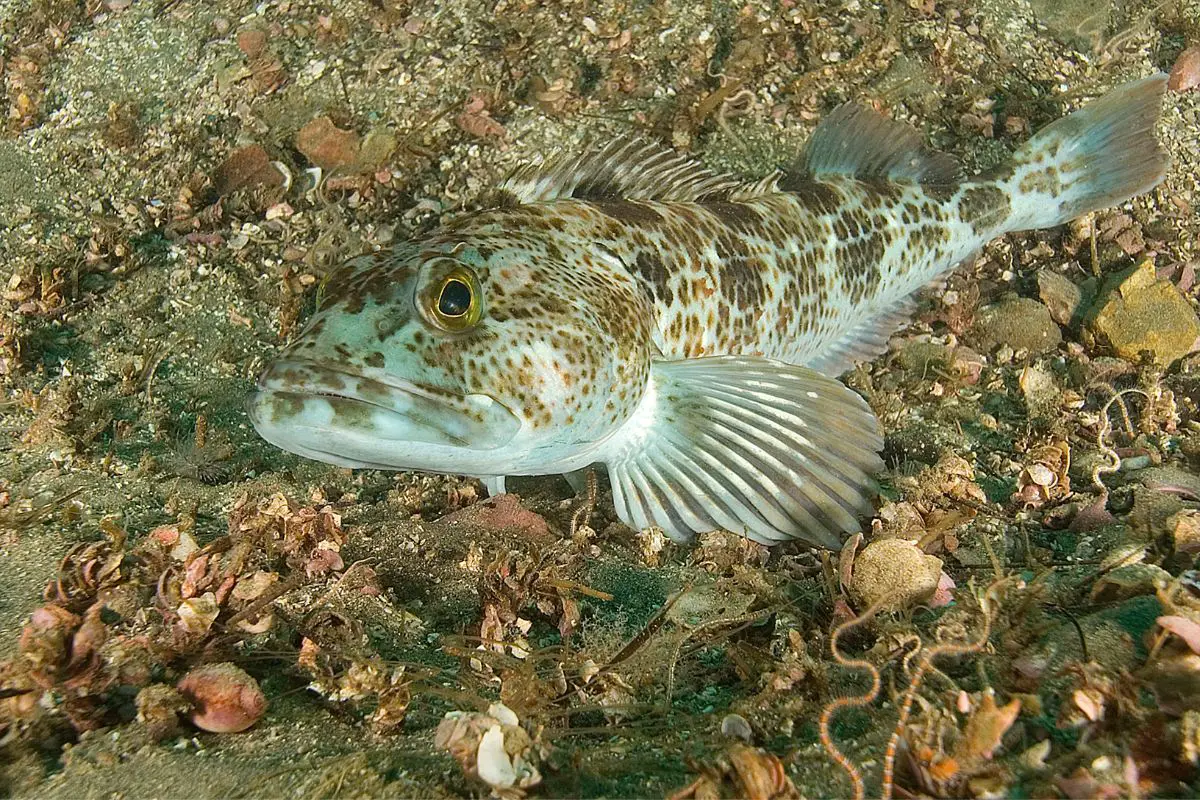
Lingcod are popular fish that are native to the Pacific Northwest in the US. They are large predatory fish that spawn nearshore every year. Lingcod can grow up to 60 inches and 70 lbs in the wild.
They live on the bottom of the ocean and grow, moving from grass beds to sandy areas. They are effective predators and eat everything from salmon and Pacific Hake to young octopi and rockfish. Like cod, Lingcod are voracious and will eat many other species.
Despite their name, Lingcod are not related to either ling or cod. Also called Buffalo cod or Cultus cod. They are members of the Greenling family, hexigrammidae.
They have large mouths and spiny backs that look nothing like Atlantic cod. However, they are popular with fishermen and when cooked they have a mild and buttery flavor that is similar to cod.
9. Rockfish are the cod of the reef.
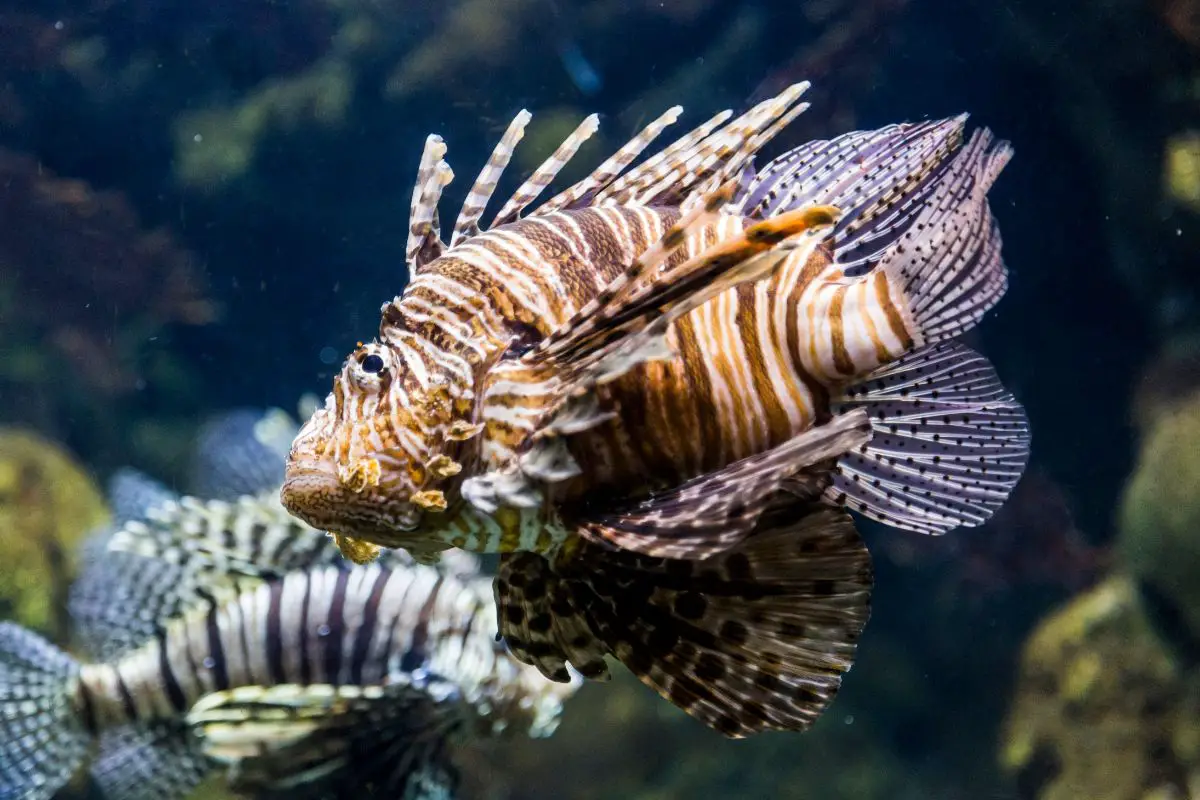
Rockfish are sometimes called “rock cod” because they live in rocky, reef areas. Rockfish are members of the family Scorpaenidae, or scorpionfish. This includes some of the most poisonous species of fish in the world, including lionfish.
Scorpionfish have venomous spines on their dorsal fins. They can use these to inject predators with nerve toxin. There are many different species.
Most rockfish live in coastal areas or reefs in and around rock formations. They feed on small reef-dwelling crustaceans and fish. Rockfish, including lionfish, are prized for their flavor.
The poison in the spines has nothing to do with the flesh of the fish, which is safe to eat and delicious. The flavor is mild and somewhat similar to cod. Cod are very different from rockfish, and inhabit a different environment.
“Rock cod” are only really related to cod in cookbooks. As fish, they live in warmer and shallower waters. They are prized, but not widely commercially fished.
10. Sablefish are blackcods.
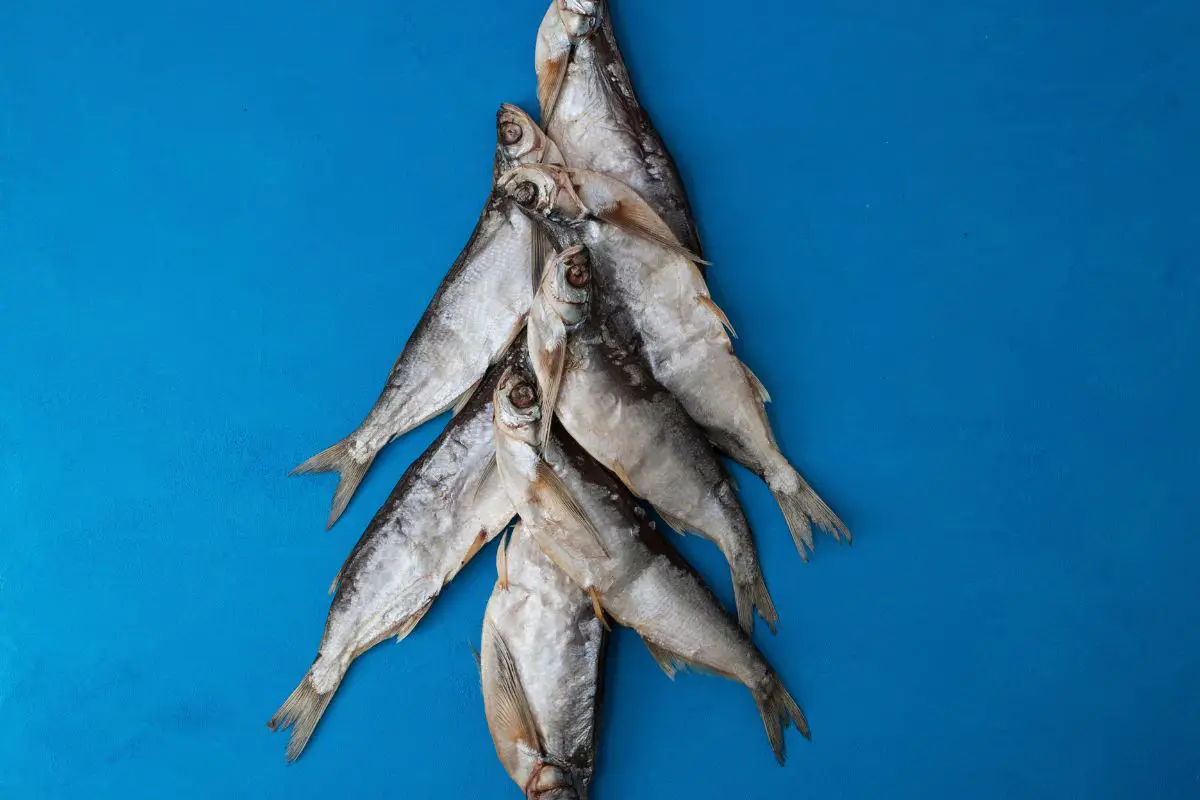
Sablefish is often marketed as “black cod.” Sablefish live in the North Pacific ocean in the deepest parts of the ocean, from 980 ft to more than 8000 feet deep. They are called “Blackcod” because of their dark color, but their bodies are longer and thinner than those of cod.
They are not related to cod. They eat almost anything, from Alaskan pollock to jellyfish and squid. They average about 28 inches in length and 8 lbs.
Sablefish have been known to swim more than 1000 miles. They are also very long-lived. A sablefish can live to be 94 years old!
Sablefish are large fish that live in the deep ocean, like cod, but their territory is in the pacific. They are not quite as big as cod and are from a different family. Although they are sometimes referred to as “blackcod”, they are very different fish.
11. Halibut is a flatfish that makes a great cod replacement.
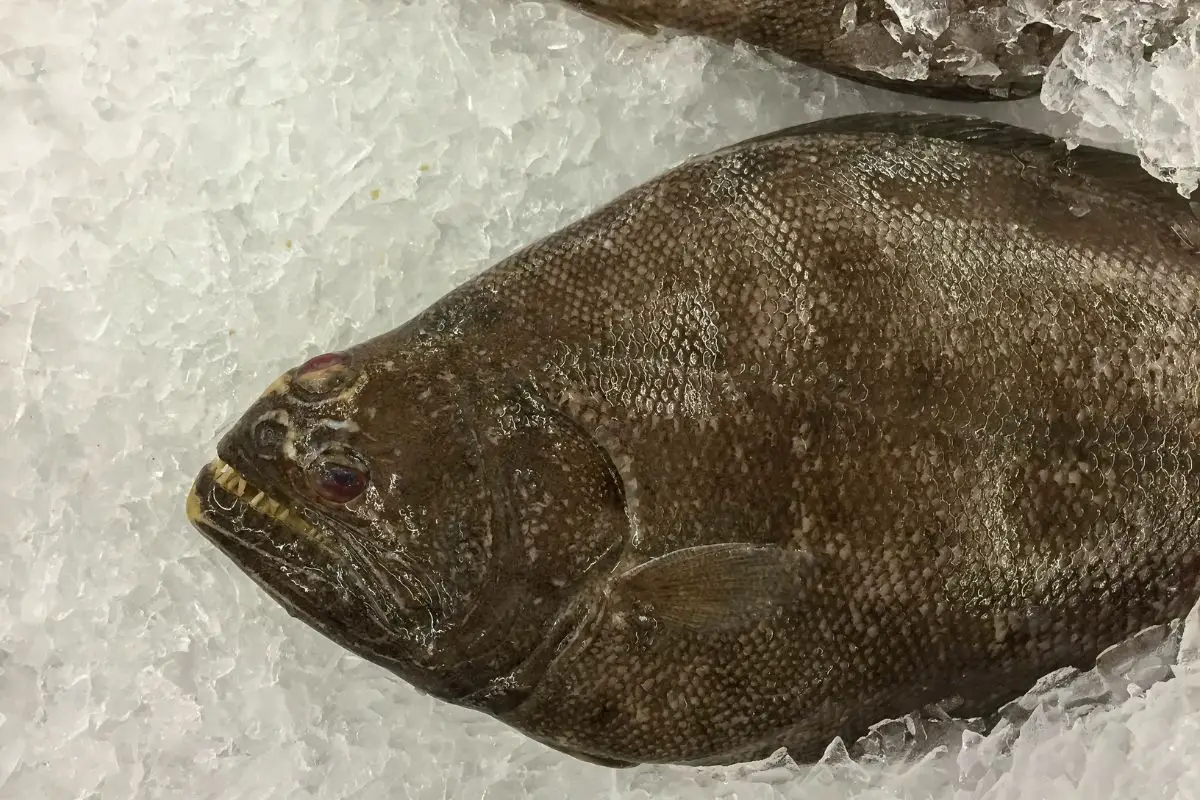
Halibut is one of the most commercially available fish in the world, and halibut is a normal replacement for cod in recipes. Halibut are huge – even bigger than cod. They can grow to be 4 feet long and more than 500 lbs!
The average halibut is closer to 3 feet and 80 lbs. They live in both oceans, although they occupy deeper water and grow larger in the Pacific. Halibut are one of the largest species of flatfish.
They eat crustaceans and small fish on the ocean floor. In recipes, cod is often replaced with halibut, which is a widely available neutral and buttery whitefish. Halibut tastes like cod, even if these two fish are very different.
12. Bigeye Ocean Perch looks like a little pink cod.
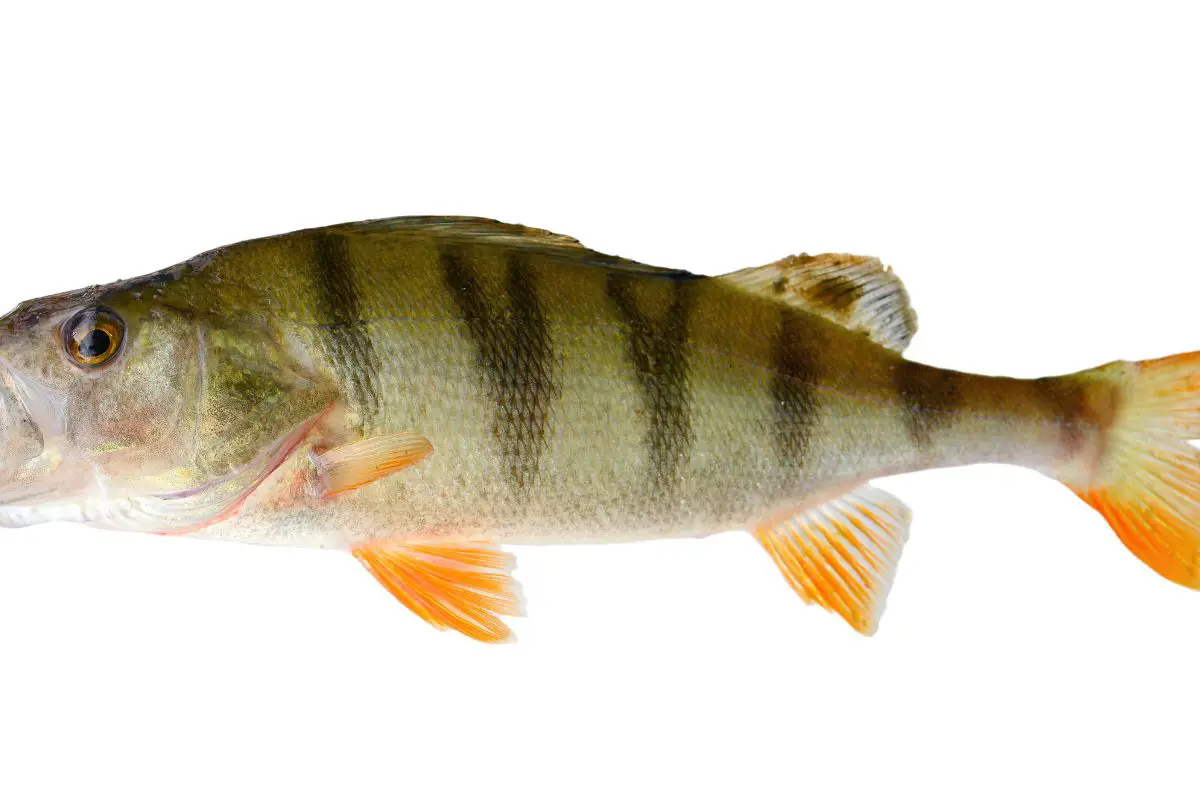
This unique fish has large eyes and a tall dorsal fin. It is pink in color and lives in waters at depths of 300 ft to 800ft in the waters off of Australia and New Zealand, and as far north as Hawaii and California. Sometimes called coral cod, the Bigeye Ocean perch does look a little like Atlantic cod in the shape of the body.
Bigeye Ocean Perch is much smaller and the color is different. They are a subspecies of rockfish, and don’t have very much in common with cod. They are planktiverous, eating copepods and krill rather than other fish.
Bigeye Ocean Perch is fished commercially, and makes a great substitute for cod in recipes. If you live in a warmer pacific region, it might be an option to replace cod.
13. Blue Cod is tasty.
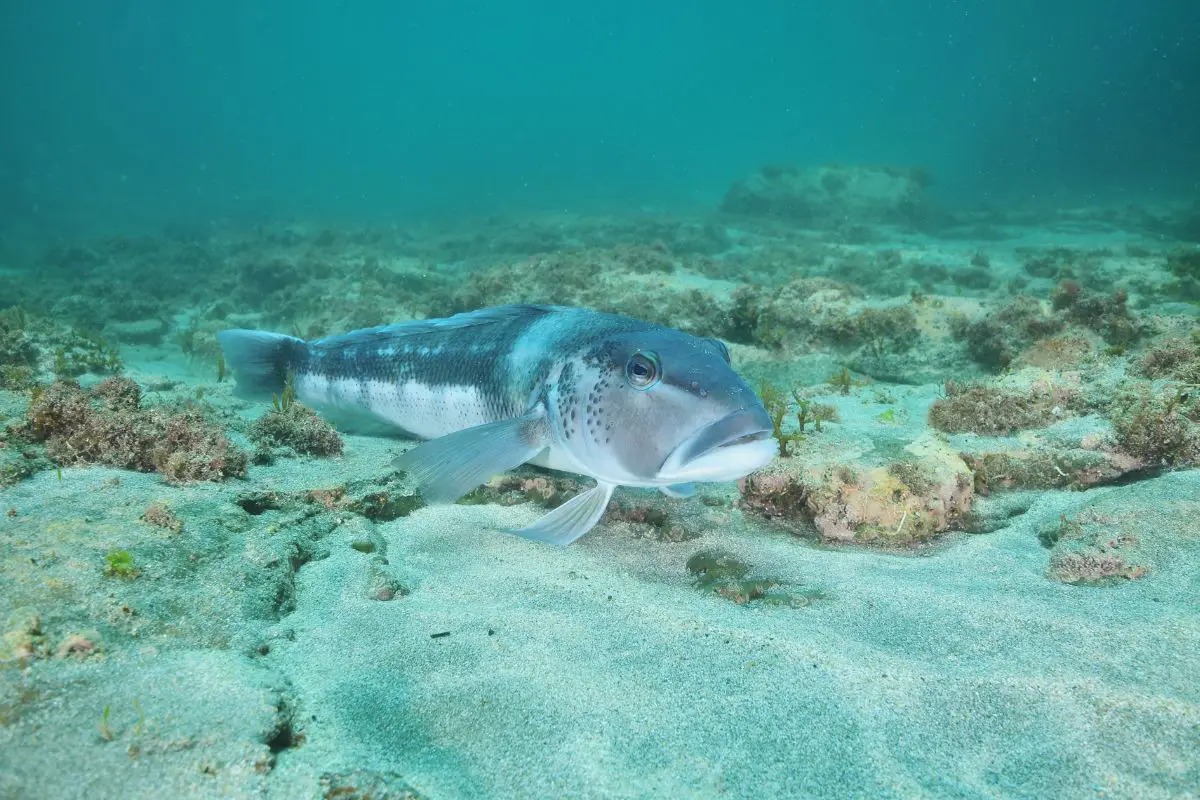
Also called Boston Blue Cod, or New Zealand Blue Cod, this species is found exclusively in the water off of New Zealand. They live at depths of 450 ft. They are bluish-black to blue-green, and white on the undersides.
They feed primarily on small crustaceans. They can grow to be 20 inches long and weigh up to 7 lbs. Blue cod are commercially fished in New Zealand, but they are not related to cod.
They are smaller with different coloration, a different habitat, and different feeding patterns.
14. Potato Cod (Potato Grouper) isn’t that tasty at all.
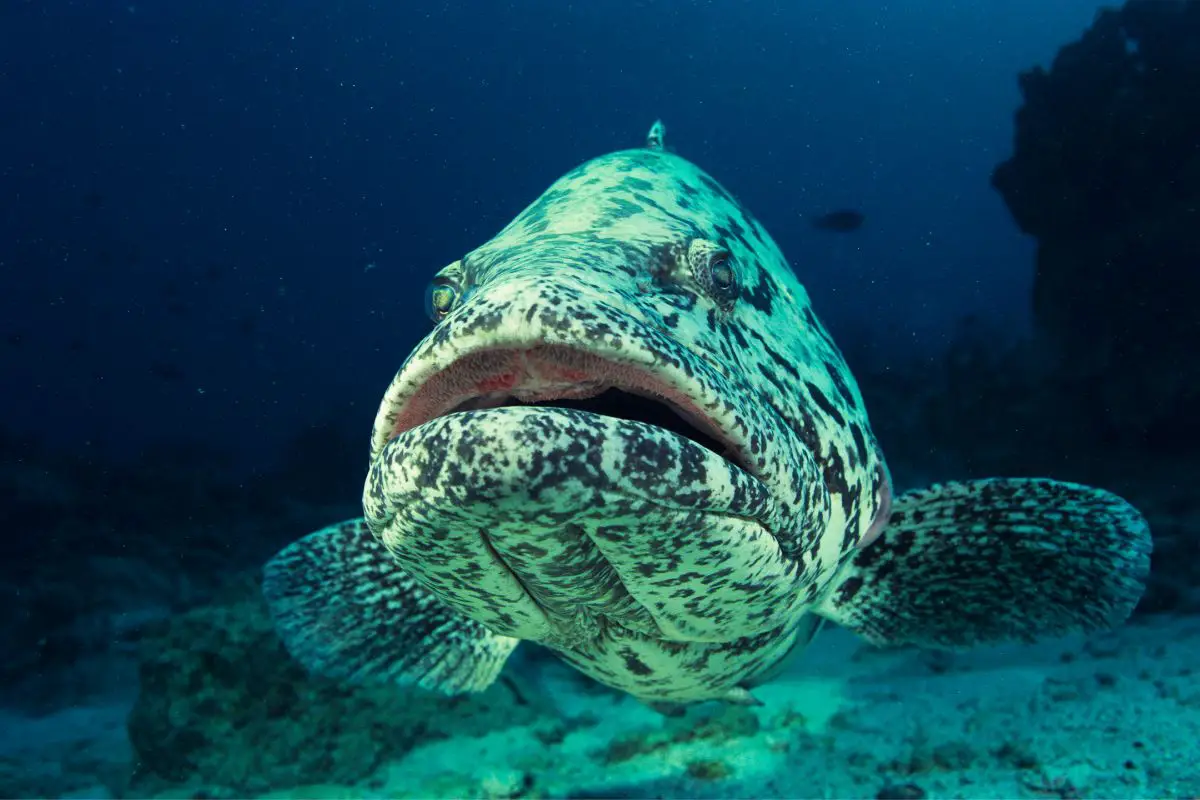
Potato groupers are also called potato cod, which is a little bit misleading. Potato groupers are ray-finned fish that live in the Indian and Pacific oceans. They live in coral reefs and sea mounts that have strong currents.
They eat rays, squid, fish and octopus. They are solitary ambush predators. Potato groupers are fished and eaten, especially in Hong Kong and China, but they are not popular even there.
The name “Potato cod” does not refer to the taste of potato groupers. It probably has more to do with their bulky bodies and their green-brown speckled coloration, that looks a little bit like a cod.
15. Patagonia toothfish are tasty fish that span the deepest oceans.
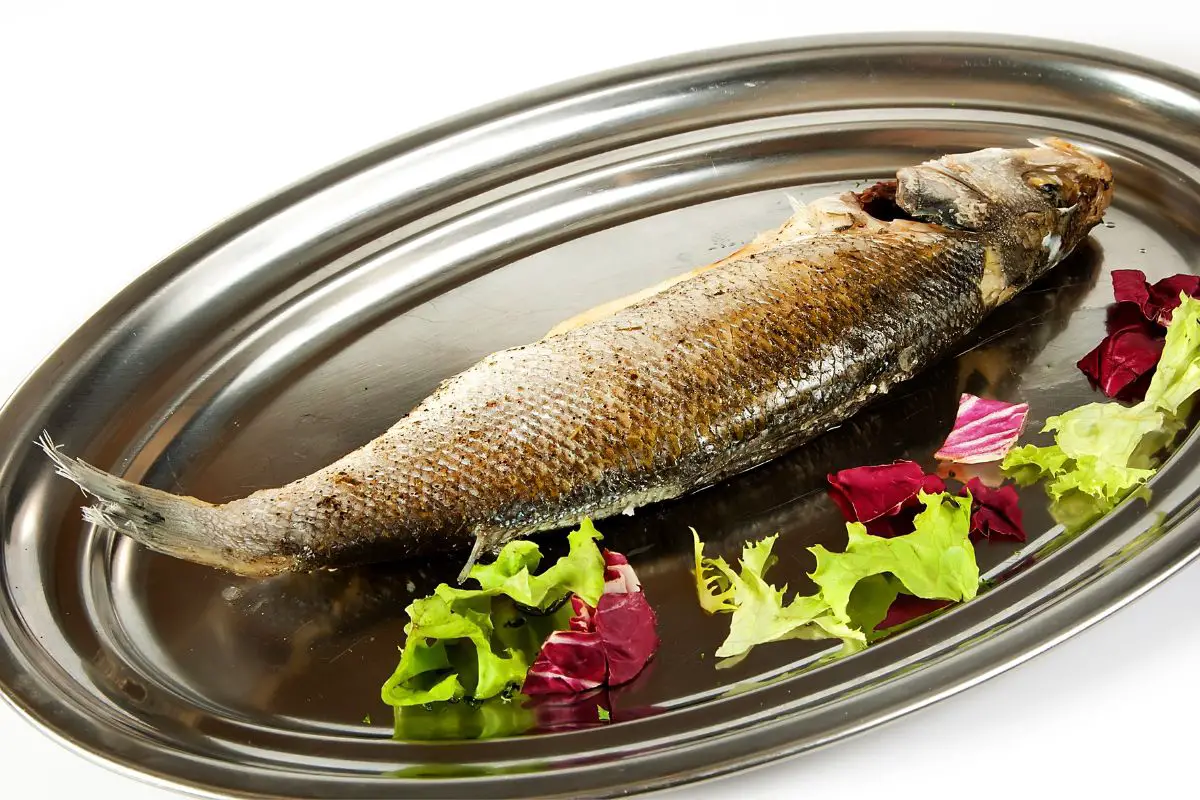
Chilean sea bass, also called the Patagonian toothfish, is a delicacy that is compared to cod for its prized whitefish flavor. A close relative of the Anarctic toothfish, the Patagonian toothfish, is found in all oceans of the southern hemisphere. They live at depths of between 150 and 12,000 feet.
They can be up to 7.5 ft long and weigh up to 220 lbs, although the average Patagonian toothfish weights 15-20 lbs. They can live for up to 50 years. They are a brownish gray color with darker spots. Patagonian toothfish are commercially fished, like cod, because they have an incredible flavor.
Cod is more neutral than Chilean sea bass, but both work in many of the same dishes. Cod like cold waters in the North Atlantic, while Patagonian toothfish span the cold waters of the southern ocean. They are both large, predatory, deep water fish.
Patagonian toothfish are different in coloration and smaller than cod, with a different flavor as well. They are not related to cod, although they occupy a similar niche in the southern ocean.
What is a good substitute for cod fish?
Any neutral whitefish can be used to replace cod in most recipes. Some popular replacements are Haddock, Tilapia, and Pollock.
What fish tastes most like cod?
Haddock and Tilapia are the closest to coOne of the most well-known whitefish in history, cod is a versatile ingredient in various cuisines. Learn more about these amazing creatures that are similar to cod.d in flavor. They are both mild, buttery, whitefish. Either fish would work as a replacement for cod in any recipe.
Is halibut a good substitute for cod?
Halibut and cod are not the same. This doesn’t mean you can’t use halibut to replace cod in a recipe, but the result will be a little bit different. Halibut is firmer, thicker, and less flaky than cod.
However, it can still work as a substitute in most recipes.
Sources:



